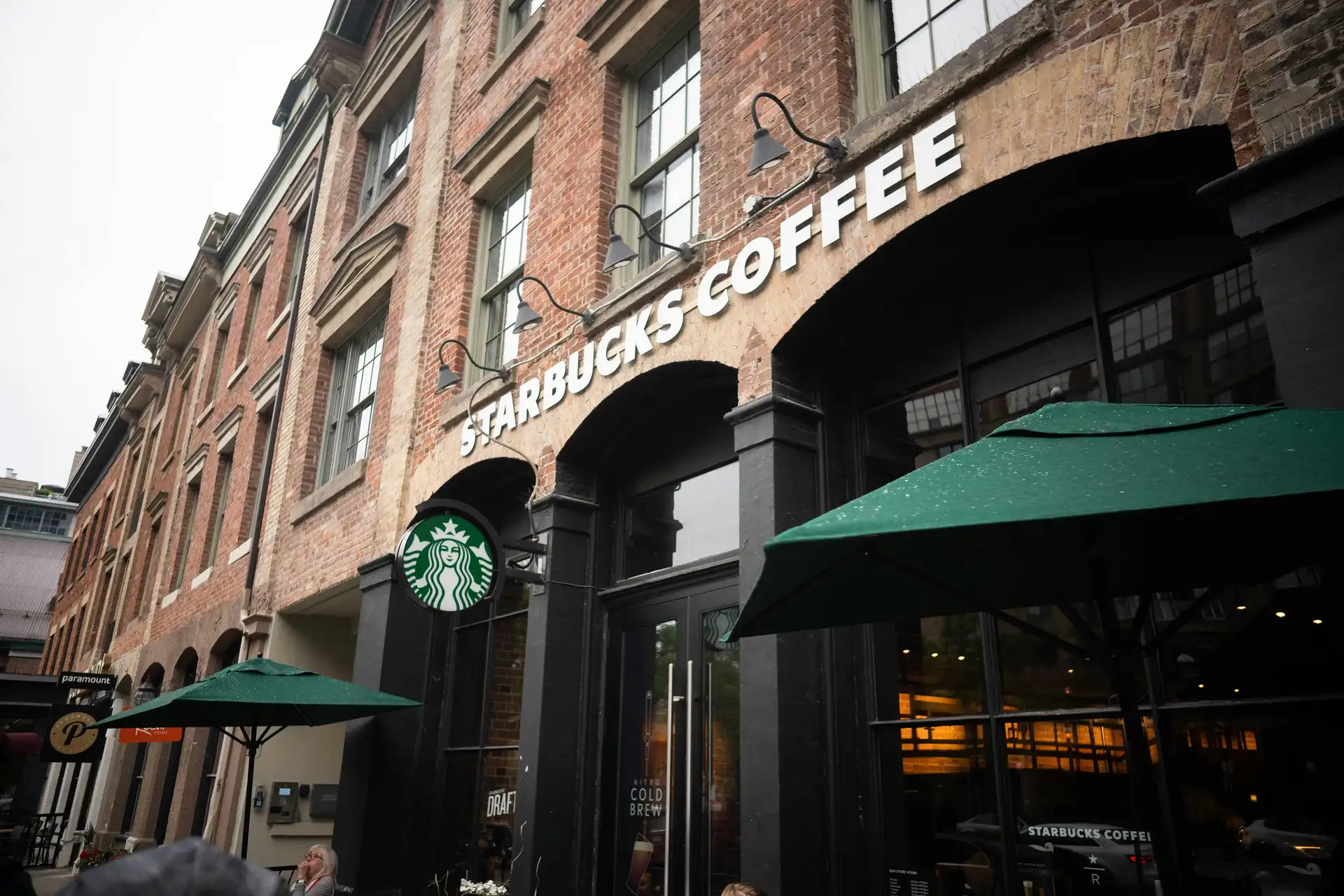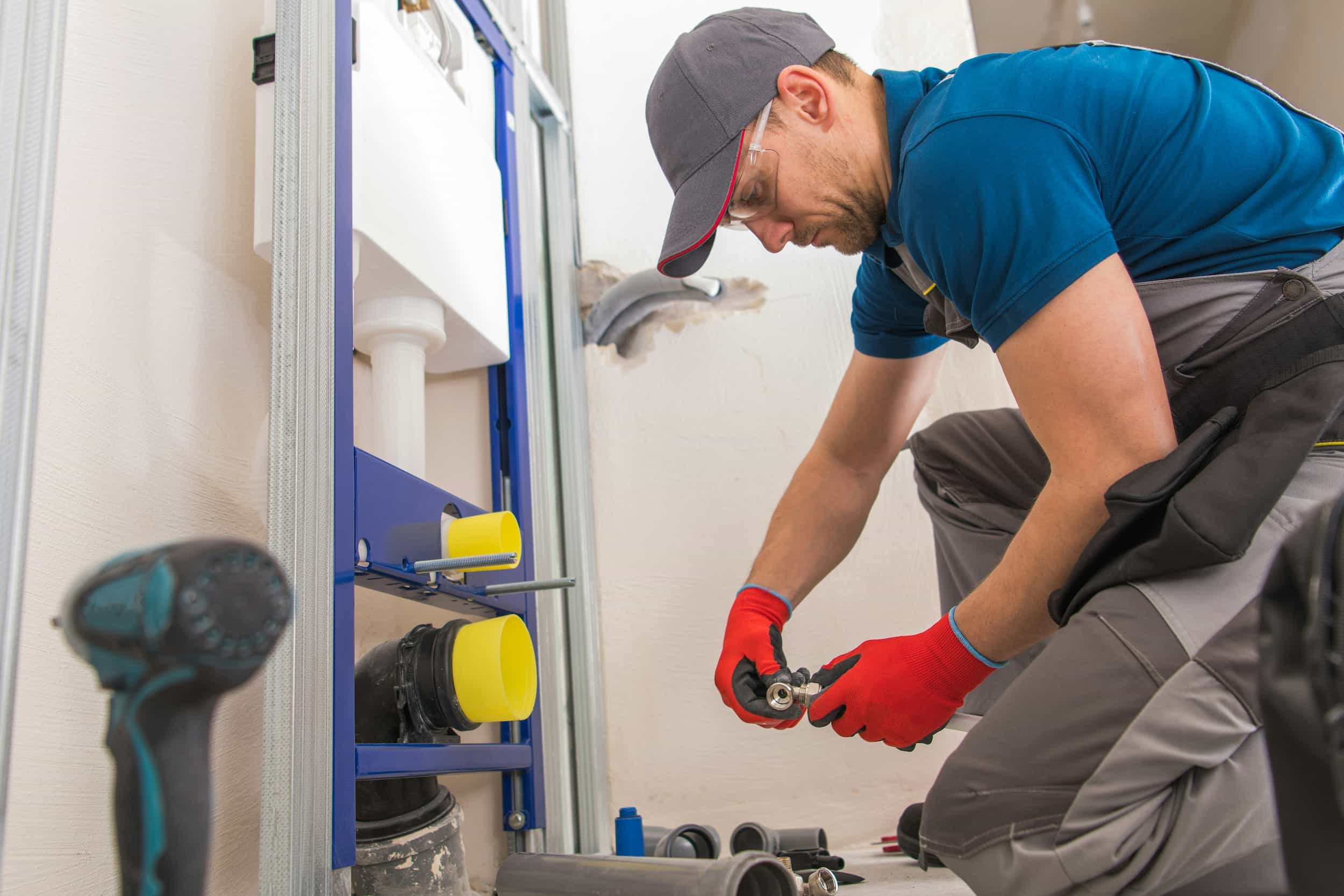Franchise SEO helps your business get found, both as a national brand and at each local branch level. It’s what connects your main website, your Google listings, and your local pages into one strong online presence.
Most franchise owners face the same challenge: you have an established brand but need every location to rank well in its local area. That’s where SEO for franchise websites comes in. It combines brand-level authority with location-specific optimization so that each branch can capture nearby searches like “coffee shop near me” or “auto repair in Dallas.”
Investing in a strong franchise SEO strategy helps attract consistent local traffic, builds credibility in your community, and drives more calls, visits, and sales without relying only on ads.
Pick the Right Site Structure to Help Every Location Rank
A unified website structure makes it easier for Google to understand your business and show the right location in local searches. When every franchise location runs its own separate website or subdomain, you dilute your brand’s authority.
Instead, build everything under one main site with individual pages for each branch. Use a clear structure like yourbrand.com/locations/city-name/ so each page focuses on that city’s services while still benefiting from your corporate domain’s strength.
Audit Your Current Setup
Start by looking at how your website is currently organized. If each franchise has its own domain, you’re spreading out your SEO power instead of sharing it.
Moving all locations under one main website helps Google recognize the relationship between them and your brand.
Work with your web developer or agency to merge smaller sites under your main domain using proper redirects so you don’t lose existing traffic.
Create a “Locations” Hub
A central “Locations” page helps customers quickly find their nearest branch. It also gives search engines a clear overview of your coverage. Include a map or a list of all branches, each linked to its own dedicated page. This setup makes navigation easy and improves how Google crawls and indexes each location. As you add new branches, keep this hub updated so every location stays visible.
Use Consistent Navigation
Make it simple for visitors (and Google) to move between locations. Add your “Locations” link in the main menu and footer so it appears on every page. Each local page should also link back to the main corporate site and nearby branches.
Consistent navigation strengthens your internal linking, which helps distribute authority evenly and improves rankings across all your locations.
Keep It Mobile-Friendly
Most people searching for a local business are on their phones, often right before visiting in person. Your website should load quickly, display correctly on all screen sizes, and have easy-to-tap buttons for calls or directions.
Avoid heavy graphics that slow down mobile performance, and test your pages with Google’s free PageSpeed Insights tool. A smooth mobile experience helps every branch capture customers searching on the go.
A single, unified site helps all your locations rank higher and makes managing updates, reviews, and branding much simpler. It also builds long-term authority, ensuring that every new franchise you add benefits from the trust and visibility of your main brand.
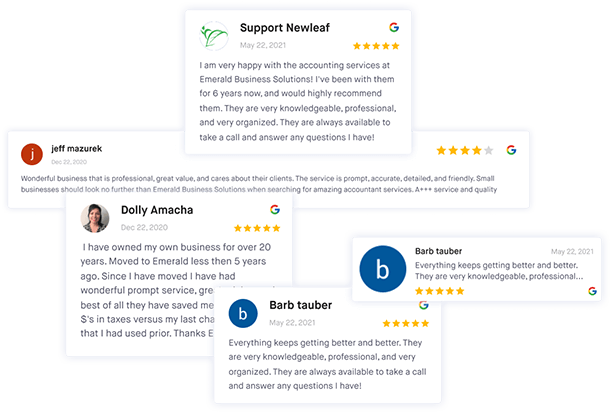
Manage your franchise business's reviews with ReviewsOnMyWebsite
Get more 5-star reviews and take control of your online reputation with ReviewsOnMyWebsite.
Standardize Google Business Profiles Across Locations
Consistent and complete Google Business Profiles (GBPs) help customers find the right branch — and improve your chances of showing up in “near me” results.
Your Google Business Profile is what powers Google Maps listings and the “Local Pack” that appears above regular search results. Each franchise should have its own verified and optimized profile.
To manage them effectively:
- Claim every location: Make sure each branch is verified in Google Business Profile Manager. This ensures you control your listings, can respond to reviews, and prevents incorrect data from spreading online.
- Use a consistent name format: Include your brand name plus the city (for example, “Sparkle Cleaners – Denver”). This makes your listings uniform across all locations, helping customers and Google recognize them as part of one brand.
- Keep hours and contact details accurate: Customers often check your profile before deciding where to visit. Outdated hours or wrong phone numbers can cost you business, so review them regularly.
- Add real photos: Pictures of storefronts, staff, and interiors help people feel confident they’ve found the right place. High-quality, authentic photos also improve engagement and can lead to more clicks and calls.
- Update regularly: Assign a manager or marketing contact to review all listings each month. Frequent updates (like adding new photos or posts) signal to Google that your business is active and reliable.
Since 86.2% of consumers use Google to look up reviews of businesses, your profile is often the first impression customers get—so treat it like your digital front door.
Build Unique Location Pages That Convert
Each location page should feel like a mini homepage: personalized, local, and ready to turn visitors into customers.
If every branch uses the same copy, Google may see the pages as duplicates, which hurts your ability to rank locally. Instead, give each page a unique personality tied to its local area so customers immediately recognize it as relevant to them.
Local Details
Every location page should include the full address, phone number, and business hours in plain text. Adding a clickable map helps customers get directions instantly, especially on mobile.
Include a “Call Now” button near the top so visitors don’t need to scroll to take action.
These small touches make it easier for people and Google to confirm that each page represents a real, physical business.
Community Cues
Show Google and customers that your location is part of the local community. Mention nearby landmarks, well-known neighborhoods, or events that are specific to the area.
This not only helps with search visibility for local terms but also makes the page feel more authentic. A short paragraph about your involvement in local activities or partnerships can go a long way toward establishing credibility.
Team Photos and Bios
People trust businesses run by real people, not faceless brands. Add photos of your staff, ideally in front of your storefront or working with customers.
Include first names or short bios to make it more personal. This builds a human connection and sets your business apart from competitors using stock photos. These images also help reinforce trust when visitors see the same team featured on your Google Business Profile.
Customer Proof
Social proof is one of the strongest drivers of local conversions. Feature two or three reviews from customers in that specific area to show others that your business is trusted locally.
Choose reviews that mention the staff, service quality, or local context. Those details make testimonials more persuasive.
Since nearly 43% of buyers read between four and six reviews before making a purchase, even a few visible testimonials can significantly influence decisions.
Clear Calls-to-Action (CTAs)
Once visitors have the information they need, make it simple for them to take the next step. Place your CTAs, such as “Call Now,” “Book Online,” or “Get Directions”, near the top of the page and repeat them once or twice as users scroll.
Each button should stand out visually, using your brand colors. Direct, action-oriented language helps convert casual visitors into real customers and ensures no opportunity is missed.
When someone lands on a location page, they should immediately see that it’s designed for their area and not a copy of another city’s page. Local details, real people, and customer voices make these pages feel alive and trustworthy, turning online traffic into in-person visits.
Identify What Your Customers Search for Nationally vs. Locally
Different locations attract different search phrases, so tailor your keywords to match both local and national intent. At the brand level, people may search for “buy a tutoring franchise” or “franchise opportunities near me.”
Locally, they’ll search for services like “math tutoring in Austin” or “after-school programs near me.” Focusing on both helps your corporate site attract franchise prospects while each branch captures customers in its immediate area.
- Use Google’s suggestions: Type your main service and city into Google, then note the autocomplete phrases that appear. These are the exact terms people in your market are searching for right now.
- Check the “People Also Ask” section: This section shows common follow-up questions related to your service. Incorporating these phrases into your content helps you appear for both informational and transactional searches.
- Use keyword research tools: Tools like Semrush and Ahrefs reveal search volume and competition levels for each phrase so you can choose realistic targets. They also help you spot local variations (e.g., “HVAC repair” in one region might be “heating service” in another.)
- Create two keyword lists: Build one for national terms that belong on your homepage or franchise opportunity pages. Then make another list for local keywords to use on each city or neighborhood page so every location ranks for nearby searches.
This approach ensures you’re visible to both potential franchisees and local customers, strengthening your presence across every market you serve.
Earn Local Links Through Community Partnerships
Local partnerships are one of the most effective ways to strengthen your SEO footprint while genuinely supporting your community.
Search engines view backlinks (hyperlinks from other reputable local websites) as trust signals that confirm your business is real, active, and valued in the area.
The goal isn’t just to collect links but to build relationships that help both your marketing and reputation grow together.
Sponsor Community Events
Supporting community events is a simple way to get your name in front of local audiences while earning a credible backlink. Many youth sports teams, charity runs, and neighborhood festivals feature sponsors on their websites and social pages, often linking directly to your business.
Even a small donation or prize can secure visibility in front of hundreds of local residents. When possible, choose events that align with your audience (e.g., a fitness franchise sponsoring a school marathon).
These small but genuine gestures strengthen both your local reputation and your SEO.
Join the Chamber of Commerce
Becoming a member of your local Chamber of Commerce offers both networking and digital benefits. Chambers typically list every member on their website with a short business description and a link, which counts as a trusted citation for local SEO.
That link helps Google verify your business information and reinforces your local credibility.
Chamber membership also opens doors to partnerships, media mentions, and introductions that can lead to even more visibility. It’s one of the most reliable and low-effort steps a franchise can take to strengthen its local presence.
Collaborate with Other Businesses
Cross-promotions with nearby businesses help you reach new customers while earning relevant links from local websites. For example, a coffee shop could partner with a bakery or florist to run a joint discount, with each business linking to the other’s page.
These collaborations often feel more organic than traditional advertising, and they signal to search engines that your business is part of a local network. Choose complementary, not competing, partners so both sides benefit equally.
With regular collaboration, these relationships can evolve into long-term referral partnerships that pay off both online and offline.
Send Local Press Updates
Local newspapers, radio stations, and blogs are always looking for stories about businesses that impact their community. Whenever you open a new branch, introduce a new product, or sponsor a charity event, write a short press release and send it to local media outlets.
Most community editors are happy to cover local success stories, often including a backlink to your website in the article. These earned media mentions provide both visibility and authority since local publications are considered trustworthy by Google.
Keep a simple outreach list of editors and journalists so you can share updates a few times per year.
Engage Local Colleges
Universities and community colleges often maintain online directories of local employers, partners, and internship opportunities. Reach out to their career or marketing departments to offer student discounts, internship programs, or guest talks.
In return, many schools will list your business (with a link) on their official website, which is highly authoritative for SEO. This also builds goodwill with younger audiences who may become long-term customers or employees.
Over time, your involvement positions your brand as a valued local partner and thought leader in your area.
Together, these partnerships help your franchise become part of the digital and physical fabric of your community. They generate high-quality backlinks, boost local awareness, and show both customers and search engines that your business is invested in the places it serves.
Turn Reviews Into a Ranking and Conversion Engine
Fresh, positive reviews boost visibility in search results and convince customers to choose you over competitors. Reviews influence two major outcomes: your Google ranking and customer trust.
According to our research, more than 78% of consumers won’t consider a business if its rating is below four stars, and 1 in 5 consumers always check reviews before making a purchase.
That makes consistent reputation management a must for every franchise location.
Ask for Reviews Consistently
The best time to ask for a review is right after a positive experience. Train your staff to politely request feedback in person, by email, or through text shortly after a purchase or visit.
A quick, friendly reminder makes it more likely that satisfied customers will take the time to leave a review. Keep the process simple by providing clear instructions on where to post.
Consistency across all locations ensures a steady stream of new reviews, which boosts both visibility and trust.
Make It Easy
Customers are far more likely to leave a review when it takes them less than a minute to do it. Provide direct links to your Google profile in follow-up emails or include a QR code near the checkout counter or receipt.
Pro tip: Use our free Google review link generator to create a link you can send to customers.
If possible, pre-fill messages with your business name and a thank-you note to make the process effortless. The goal is to remove friction so customers can share feedback while their positive experience is still fresh.
The easier it is, the more reviews your franchise will collect over time.
Respond to All Feedback
Every review deserves acknowledgment, whether it’s praise or a complaint. Responding shows customers you care about their experience and take feedback seriously.
In fact, 78.3% of buyers say seeing a thoughtful response to a negative review makes them more likely to trust a business.
Keep your tone professional, thank customers for their comments, and invite unhappy reviewers to discuss their concerns privately.
A well-written response can turn criticism into loyalty and shows future customers that you’re attentive and accountable.
Pro tip: You can use ReviewsOnMyWebsite to read and respond to all the reviews your business gets from one central location. There’s also an AI response feature that allows you to generate personalized review replies in seconds.
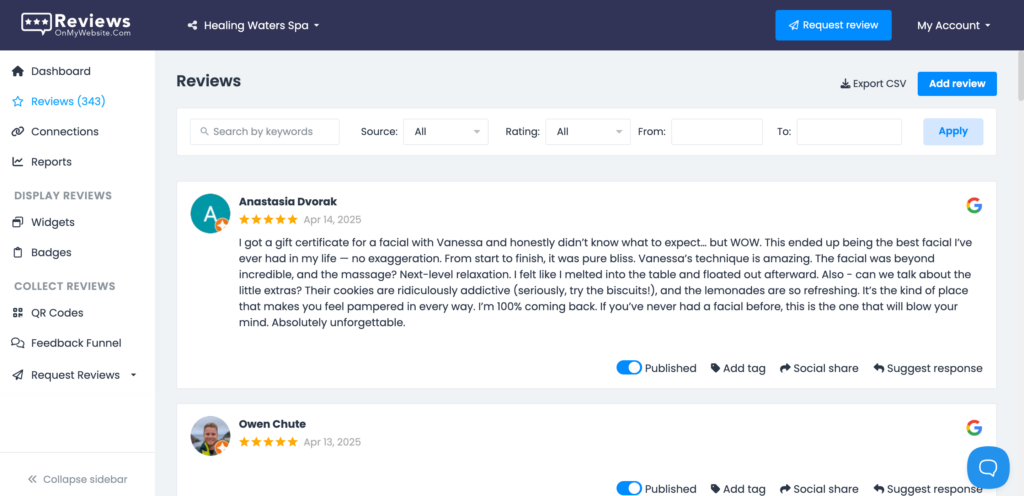
Monitor Regularly
Don’t let weeks go by without checking your reviews. Set aside time each week to read new feedback and spot trends across your locations. If several branches receive similar complaints, it may point to a training or service issue that needs attention.
Use this insight to improve operations and customer experience. Regular monitoring ensures that issues are addressed quickly before they affect reputation or search visibility.
Highlight Great Reviews
Showcasing positive reviews reminds customers and search engines that your business consistently delivers. Feature standout testimonials on your location pages, social media, or in marketing materials.
When visitors see familiar names or mentions of their city, it adds credibility and local relevance. You can also rotate new reviews quarterly to keep your content fresh. Highlighting real customer experiences makes your franchise feel approachable and trustworthy across every location.
Consistent, high-quality reviews build trust across your entire network and signal to Google that your franchise is reliable and popular in each community it serves.
Over time, this steady flow of authentic feedback becomes one of your strongest assets for ranking locally and winning customer loyalty.
Pro tip: Use ReviewsOnMyWebsite’s review widget to display top customer reviews on your site with ease.
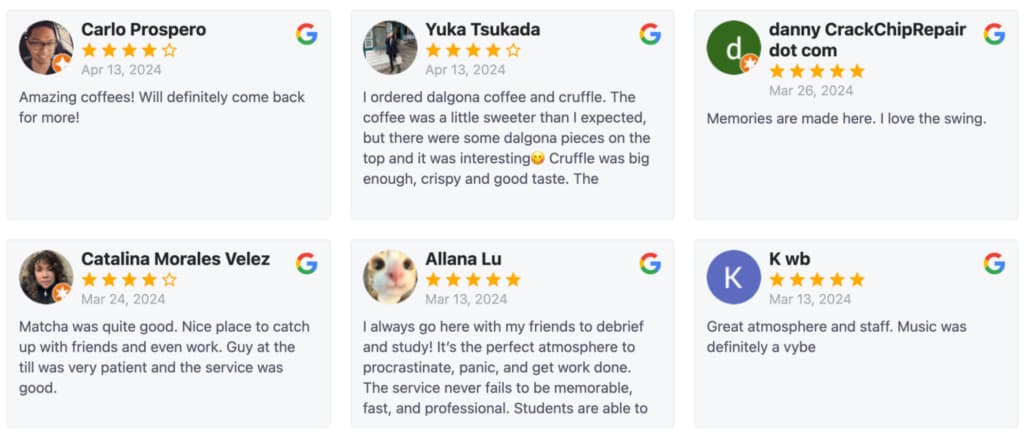
Measure Results for Each Location
Tracking results helps you understand which locations are thriving and which need more support.
Measurement doesn’t need to be complex or technical. The goal is to understand which locations are performing well and which ones need more attention.
Focus on these three simple metrics:
- Website traffic by location: Check which city pages attract the most visitors using tools like Google Analytics. If some pages consistently underperform, they may need stronger local keywords, better photos, or updated content.
- Leads and calls: Track phone calls, contact form submissions, and direction requests from your Google Business Profiles. These metrics show which locations are converting online interest into real customer actions.
- Review growth: Monitor both your average star rating and the number of new reviews each month. A steady increase in quality reviews usually aligns with better visibility and higher customer trust.
You can use free tools like Google Analytics and Google Business Profile Insights. Create a shared spreadsheet or dashboard so you can review all locations in one place.
If you notice one branch getting more reviews or higher traffic, study what they’re doing differently and then apply those tactics across your other franchises.

Manage your franchise business's reviews with ReviewsOnMyWebsite
Get more 5-star reviews and take control of your online reputation with ReviewsOnMyWebsite.
Keep Everything Consistent with a Quarterly Tune-Up
Regular updates keep your online presence fresh and prevent small errors from snowballing into ranking issues.
Think of this as routine maintenance for your digital storefronts. Just as your physical locations need cleaning and upkeep, your website and listings need ongoing care.
Each quarter:
- Confirm contact information: Make sure addresses, business hours, and phone numbers are accurate across your website, Google listings, and social pages. Even a small inconsistency can confuse customers or hurt your local rankings.
- Add new photos: Update storefront, team, or product images every season to keep your content fresh. Current photos also reassure customers that your business is active and trustworthy.
- Refresh offers and services: Remove expired promotions and update descriptions if your pricing or offerings change. This keeps your marketing clear and ensures customers always see the most relevant information.
- Revisit reviews: Encourage recent customers to share new feedback and thank those who already have. Regular engagement builds trust and signals to Google that your business is responsive.
- Check loading speed: Use Google PageSpeed Insights to make sure your pages load quickly on both desktop and mobile. A faster site improves the user experience and can positively impact your search rankings.
According to the State of Small Business Marketing, 35% of businesses update their website monthly and 25% quarterly, which helps them maintain visibility and user trust. Small, regular updates are far easier than a full overhaul later.
Frequently Asked Questions About Franchise SEO
What Is Franchise SEO?
Franchise SEO is the process of improving visibility for both your brand and individual franchise locations. It ensures each branch appears in local searches while your corporate website ranks for broader, brand-level terms.
When done right, it connects all your online assets (including your website, listings, and reviews) into one strong, consistent presence.
Why Is SEO Important for Franchise Businesses?
SEO helps people find your nearest location when they’re ready to buy. It reduces reliance on paid ads and ensures long-term visibility in your area.
A solid franchise SEO strategy also builds trust by showing customers accurate information and recent reviews across every location.
How to Jumpstart Local SEO for a New Franchise Location?
Start by creating and verifying the location’s Google Business Profile. Add accurate details, photos, and business hours.
Then publish a unique location page on your website with local copy and customer reviews. Finally, encourage your first few visitors to leave feedback to kickstart your reputation.
How Often Should I Update My Franchise’s Website?
Aim to review and update your content every quarter. That includes adding new photos, adjusting offers, and checking that each branch’s hours or contact information are correct.
Regular updates help maintain rankings and show customers that your business is active and reliable.
How Can I Get More Customer Reviews?
Train staff to ask for reviews right after a positive interaction and make it as easy as possible to leave one. You can share direct Google review links via text or email.
Should Franchise Owners Manage SEO Themselves or Hire Help?
If you enjoy marketing and have time, you can handle basics like Google Business Profile updates and reviews in-house. However, for technical tasks (such as optimizing site structure, keyword strategy, and local pages), hiring an experienced SEO agency often delivers faster, more consistent results across all locations.
